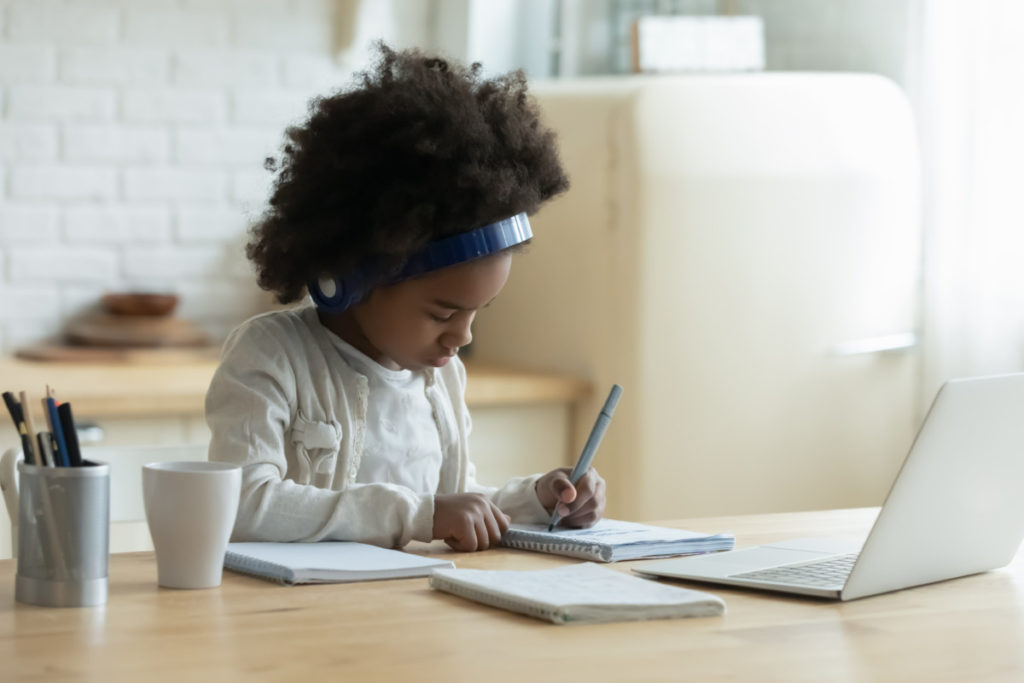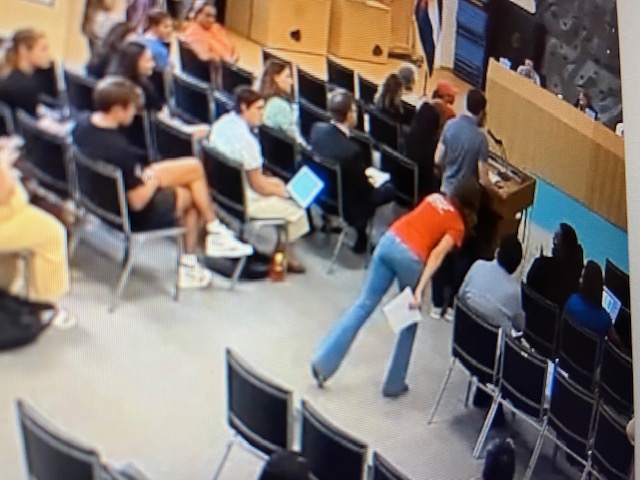More than 40 percent of Black, Latino and Native American Denver Public Schools students chose a fully remote learning option for the 2020-2021 school year while only about 20 percent of white students did, recently released district data shows.
Given uncertainties about the quality of remote learning, this disparity raises concerns about whether the pandemic will widen already large opportunity gaps in the district when schools allow students who so choose to return to in-person learning.
Remote learning brings a variety of stresses, including financial, said parent John Johnson, a telecommunications engineer, who is Black. He works from home while his son attends East High School remotely and his daughter attends pre-kindergarten in person.
“I’m having to buy two extra meals (breakfast and lunch) that I typically wouldn’t,” Johnson said. “In addition to that, of course, the water, the electricity, the whole nine.”
Johnson, also said it’s challenging to help his son with school work — a responsibility that’s fallen onto many parents of remote students, who may have better one-on-one access to their teachers in person.
Enrollment declines hit DPS
Overall, DPS saw a significant decline in enrollment from 2019 to 2020 — largely due to the effects the COVID-19 pandemic has had on families.
The district recently released its annual Strategic Regional Analysis, a report on the state of DPS’ budget, demographics and enrollment. The analysis revealed a enrollment drop of 3 percent, or a little more than 3,000 students.
Students are neither dropping out nor are they getting sick at a significantly higher rate than normal. They have not disappeared, nor are they playing hooky. The pressing questions are where they’ve gone and how they’re doing.
As far as new enrollments go, DPS high schools actually saw an increase. However, the decrease in new students at younger levels (preschool through kindergarten) was so great that it pushed the overall decline over that 3 percent mark.
Fewer children are becoming students in the first place due to health and safety concerns. Sara Walsh, DPS director of real estate and planning, chalked this decline up to two other factors: Lower birth rates and changing housing markets causing families to have fewer children.
While many elementary school students have returned this week to in-person learning, students in middle and high schools will be phased in between now and the beginning of February. But families at all grade levels can still choose a remote option through the end of the year.
According to enrollment data, almost half of minority students enrolled in Denver’s secondary schools have chosen the fully remote option.
“Regionally, we saw the Far Northeast had the highest rates of students opting into fully remote learning,” Walsh said, “and then we saw our students of color opting into remote learning at rates higher than their white peers.”
The southwest region also saw more students of color choosing to attend school remotely. These two regions have Denver’s highest rates of students of color and its lowest-income communities. More than 40 percent of Black, Latino and Native American students chose a remote learning option for the 2020-2021 school year while about 20 percent of white students did.
The regional analysis offered possible reasons for this shift, including but not limited to systemic inequities in housing, employment and (especially in the context of the pandemic) healthcare.
Johnson said that in his children’s experience, low-income and middle class students of any race have been attending school in person when it becomes possible for them to do so. Gaining access to the same resources beyond the classroom that they may have had before the pandemic, he said—such as standardized test prep or sessions at a tutoring center—is a different story.
“Lower to middle class students don’t have that accessibility for two reasons,” Johnson said. “For one, mom or dad typically has to go out to a location to punch a clock, and you figure from a 7-to-3:30 platform, the entire day is lost. By the time they get home they have to deal with everything else, and then they don’t have the financial means to go out and invest in someone else (to augment their kids’ learning).”
Parents and educators said they do not assume remote learning has inherently lower quality than in-person learning. Rather, they’re concerned there is no way to tell. No true measurement tool exists for DPS educators, parents and students to understand the quality of remote curriculum and instruction relative to their in-person versions.
This shift in the learning environment makes it more difficult to draw conclusions about how students are doing in school. How much can certain students participate if they have subpar internet connectivity or inferior equipment? What are students in person gaining from their experience that remote students cannot?
Though no final determination has been made, there likely will be no state standardized tests administered this year, so measuring how remote versus in-person students are performing will rely on school-based assessments, which aren’t typically released to the public.
Because students of color in low-income communities are disproportionately choosing remote learning, though, parents worry these students are being denied a healthy level of engagement with their classmates and teachers.
“I’m seeing a reduction of the structure … I’ll see [my son] at five o’clock in the morning getting up, doing an assignment,” Johnson said, adding that students are often distracted during courses and sometimes not doing anything at all. “I’m not seeing that focus that I think the classroom provides.”
In fact, data from the DPS “Updates on 20-21 Return” report show a possible lack of engagement already. As of November, average DPS in-person student attendance was at about 88 percent. Online participation, however, had a much lower attendance record: about 80 percent overall. Additionally, online participation for English language learners is as low as 66 percent.
DPS spokesperson Winna Maclaren said enrollment numbers should begin bouncing back by next academic year, when, presumably, vaccines will have brought the pandemic under control.
“We believe parents are making a choice to not send younger students back to school given the many interruptions COVID-19 has imposed on in-person learning,” Maclaren said in an email. “We are forecasting that many of those students will return.”




